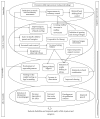A clinical study of autologous bone marrow mononuclear cells for cerebral palsy patients: a new frontier
- PMID: 25788947
- PMCID: PMC4348592
- DOI: 10.1155/2015/905874
A clinical study of autologous bone marrow mononuclear cells for cerebral palsy patients: a new frontier
Abstract
Cerebral palsy is a nonprogressive heterogeneous group of neurological disorders with a growing rate of prevalence. Recently, cellular therapy is emerging as a potential novel treatment strategy for cerebral palsy. The various mechanisms by which cellular therapy works include neuroprotection, immunomodulation, neurorestoration, and neurogenesis. We conducted an open label, nonrandomized study on 40 cases of cerebral palsy with an aim of evaluating the benefit of cellular therapy in combination with rehabilitation. These cases were administered autologous bone marrow mononuclear cells intrathecally. The follow-up was carried out at 1 week, 3 months, and 6 months after the intervention. Adverse events of the treatment were also monitored in this duration. Overall, at six months, 95% of patients showed improvements. The study population was further divided into diplegic, quadriplegic, and miscellaneous group of cerebral palsy. On statistical analysis, a significant association was established between the symptomatic improvements and cell therapy in diplegic and quadriplegic cerebral palsy. PET-CT scan done in 6 patients showed metabolic improvements in areas of the brain correlating to clinical improvements. The results of this study demonstrate that cellular therapy may accelerate the development, reduce disability, and improve the quality of life of patients with cerebral palsy.
Figures





References
-
- Longo M., Hankins G. D. V. Defining cerebral palsy: pathogenesis, pathophysiology and new intervention. Minerva Ginecologica. 2009;61(5):421–429. - PubMed
-
- Sophie L. Treatment of Cerebral Palsy and Motor Delay. 5th. Wiley-Blackwell; 2010.
-
- Sharma A., Sane H., Badhe P., et al. Autologous bone marrow stem cell therapy shows functional improvement in hemorrhagic stroke: a case study. Indian Journal of Clinical Practice. 2012;23(2):100–105.
-
- Sharma A., Gokulchandran N., Sane H., et al. Detailed analysis of the clinical effects of cell therapy for thoracolumbar spinal cord injury: an original study. Journal of Neurorestoratology. 2013;1:13–22.
LinkOut - more resources
Full Text Sources
Other Literature Sources
Medical

